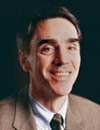Managing Impacts of Population Aging

The U.S. is getting older. We’ve known that for a while, although more recent estimates are higher than originally expected.
By 2050 21% of the U.S. population will be aged 65 or older, more than doubling from an estimated 40 million to 90 million (National Center for Health and the Aging, 2013: 2).
Population aging will bring many changes, including those to social welfare systems and healthcare. So, what needs to change to care for a growing population of older adults with multiple chronic conditions, cognitive or functional disabilities?
“As we look to the future, we foresee unprecedented opportunities brought about by advances in science and technology … to build synergy and leverage resources to help make it possible for older adults to experience healthier, more productive lives.”
Government alone won’t be able to address all of these challenges, nor should it. We’ll need everyone to contribute to the effort with multi-disciplinary, multi-perspective research and development. Together we can do a lot.
No. 1 - The aging population needs support to stay as healthy as possible to minimize the burdens of poor health.
No. 2 - As more and more of our society is involved in providing care to aging family members, there are likely to be downstream impacts on the caregiver’s health.
No. 3 - As people move into old age and lose mobility and other function, they often struggle deeply with identity.
This short list shows the range of potential challenges that we face as a society and the type of broad-scoped research and develop that we need to meet the challenge. It’s not enough to ask how multiple chronic conditions affect the elderly, but we have to look at the system. Who is helping care for the elderly? What does that mean for the caregiver’s health? Can we do anything to mitigate, if not solve those challenges?
In the coming years, we aim to:
 About the Author
About the Author
Gavin W. Hougham, Ph.D., is a medical sociologist and health services researcher at Battelle’s Seattle office. He was formerly on the faculty at the University of Chicago in the Department of Medicine, where he worked to improve the care of hospitalized persons by developing new methods of event analysis using sequence pattern matching algorithms borrowed from genomics.
By 2050 21% of the U.S. population will be aged 65 or older, more than doubling from an estimated 40 million to 90 million (National Center for Health and the Aging, 2013: 2).
Population aging will bring many changes, including those to social welfare systems and healthcare. So, what needs to change to care for a growing population of older adults with multiple chronic conditions, cognitive or functional disabilities?
Recognizing the Need
Private and public sector groups recognize the great need to address the aging of our population. I think that Richard J. Hodes, the Director of the National Institute on Aging (NIA), said it well:“As we look to the future, we foresee unprecedented opportunities brought about by advances in science and technology … to build synergy and leverage resources to help make it possible for older adults to experience healthier, more productive lives.”
Government alone won’t be able to address all of these challenges, nor should it. We’ll need everyone to contribute to the effort with multi-disciplinary, multi-perspective research and development. Together we can do a lot.
Three Specific Challenges
The range of challenges is huge, from impacts on government entitlement programs to social costs as family dynamics change. These are what we see as the top three challenges:No. 1 - The aging population needs support to stay as healthy as possible to minimize the burdens of poor health.
No. 2 - As more and more of our society is involved in providing care to aging family members, there are likely to be downstream impacts on the caregiver’s health.
No. 3 - As people move into old age and lose mobility and other function, they often struggle deeply with identity.
This short list shows the range of potential challenges that we face as a society and the type of broad-scoped research and develop that we need to meet the challenge. It’s not enough to ask how multiple chronic conditions affect the elderly, but we have to look at the system. Who is helping care for the elderly? What does that mean for the caregiver’s health? Can we do anything to mitigate, if not solve those challenges?
Addressing These Challenges
Battelle is addressing these challenges just as we do all the challenges that come our way – with multi-disciplinary teams that are working on creative solutions. Right now, we have employees evaluating an older-adult mobility assessment tool, while down the hall, a team of engineers are working on new medical devices.In the coming years, we aim to:
- Improve our understanding of the aging process and the well-being of older adults
- Increase the effectiveness of elder-focused institutions through research and stakeholder engagement
- Provide active direct enrichment for older adults’ lives through community engagement and a program of aging-focused philanthropy
 About the Author
About the AuthorGavin W. Hougham, Ph.D., is a medical sociologist and health services researcher at Battelle’s Seattle office. He was formerly on the faculty at the University of Chicago in the Department of Medicine, where he worked to improve the care of hospitalized persons by developing new methods of event analysis using sequence pattern matching algorithms borrowed from genomics.
Sign Up for Battelle Updates
Follow along with the latest news, announcements and updates from our Battelle community of solvers.